After the atomic bombing of Hiroshima on 6th August 1945, with landscapes demolished, soils charred and radiation rampant, Dr. Harold Jacobsen, a scientist from the Manhattan Project, told the Washington Post that Hiroshima will be barren of life and nothing will grow for 75 years. But nature had other plans. The following spring, to everyone's surprise and delight, new shoots were seen springing up amongst the debris of the city. Those new saplings provided a powerful message to the survivors of the atomic bomb and gave them hope that they could rebuild their city.
Today, over six decades after the atomic bomb, Hiroshima is a green and vibrant modern city. Many of the trees that were planted in the city after the war were gifts from overseas donors and donors from other parts of Japan. However, hundreds of trees that are still standing today were actually around the vicinity when the bomb went off. Though broken and badly charred, they survived and soon were healthy again.
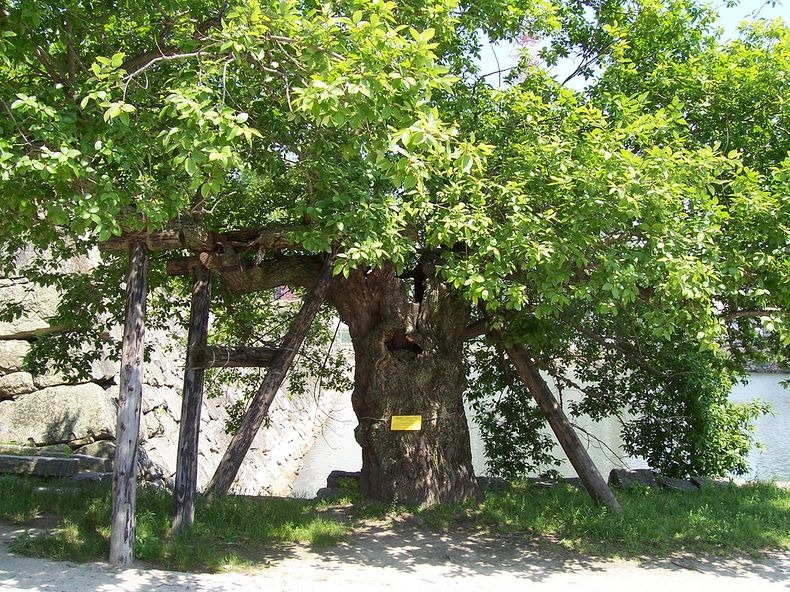
After the war, many of those trees were preserved in 55 locations within a 2km radius of the hypocenter. Today, they are officially registered as A-bombed trees. Each A-bombed tree is called a "Hibaku Jumoku" - survivor tree, and is identified by a name plate. According to the City of Hiroshima, there are about 170 survivor trees representing 32 different species.
The tree closest to the hypocenter is a Weeping Willow, which stands 370 meters away from the blast. Although the original tree was toppled by the bomb, its roots survived and new buds sprouted at the base. Another Weeping Willow stands near Seishonen and the Baseball Stadium, 450 meters away from ground zero. A partial list of A-bomb survivors can be found on this page.
The trees are located all over on the grounds of public buildings, temples, and shrines, and are under the care of the Hiroshima government. Seeds and seedlings from A-bombed trees are shared by the city and Hiroshima citizens with people in Japan and overseas, and these new trees are now growing in places all over the world.

One of the two pillars of the Sanno Shrine Torii was toppled by the A-bomb blast. The blast also blew away the branches and leaves of the two camphor trees in the precincts of the Shrine, which were then more than 500 years old. At that time, it was feared that the trees might wither and die; however, they gradually began to recover, and now are thickly covered with leaves and branches. Photo credit
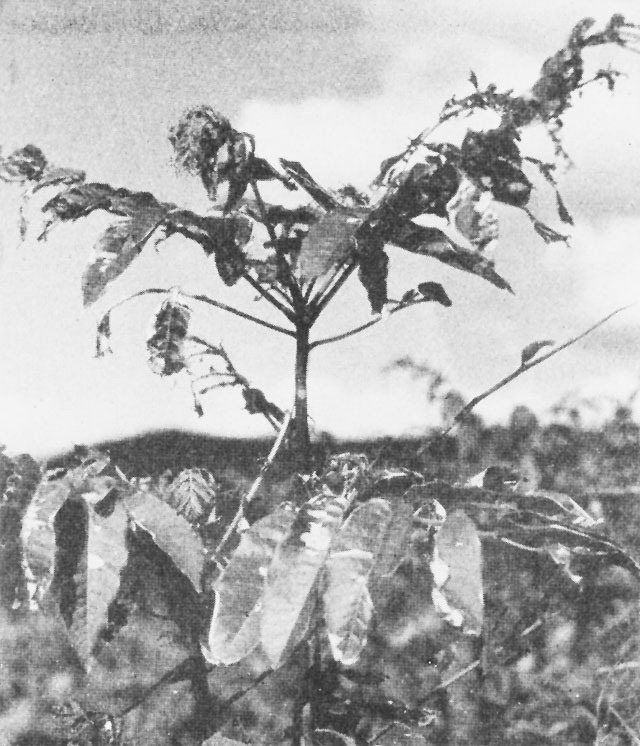
Effect of the blast on a plant. Photo credit
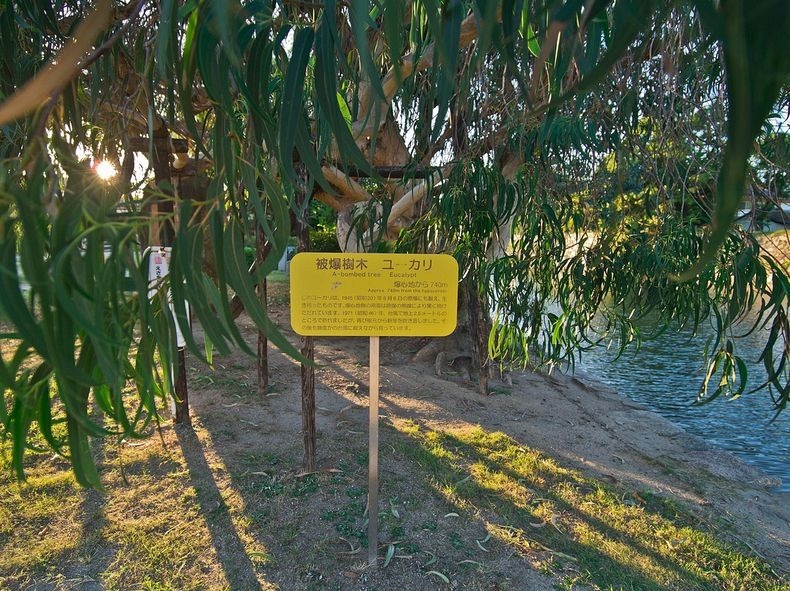
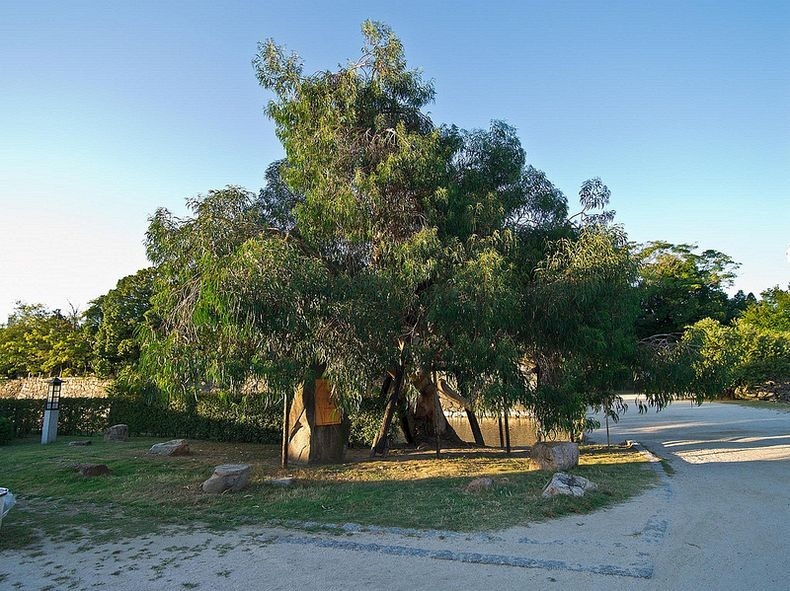
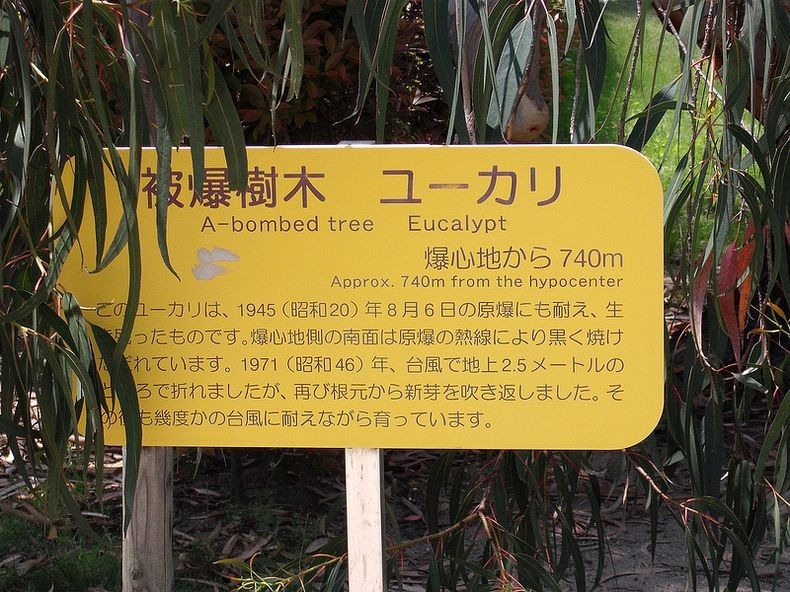
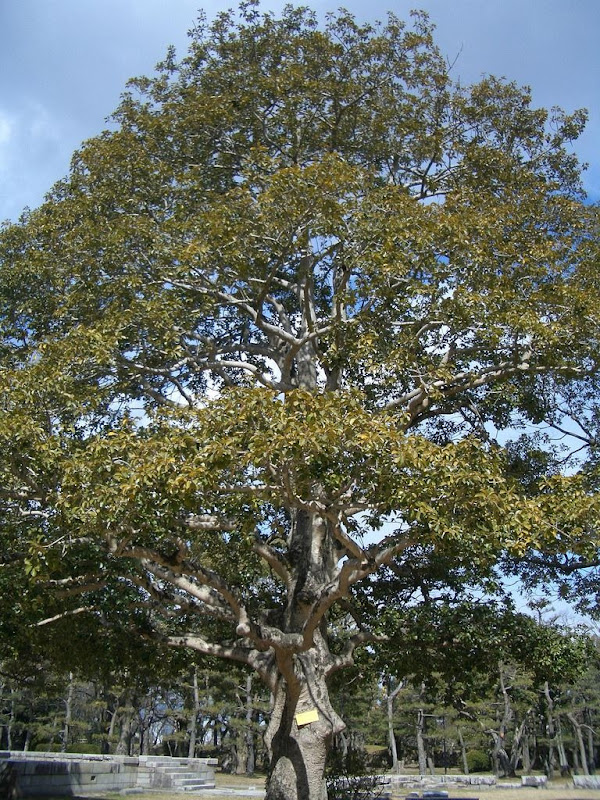
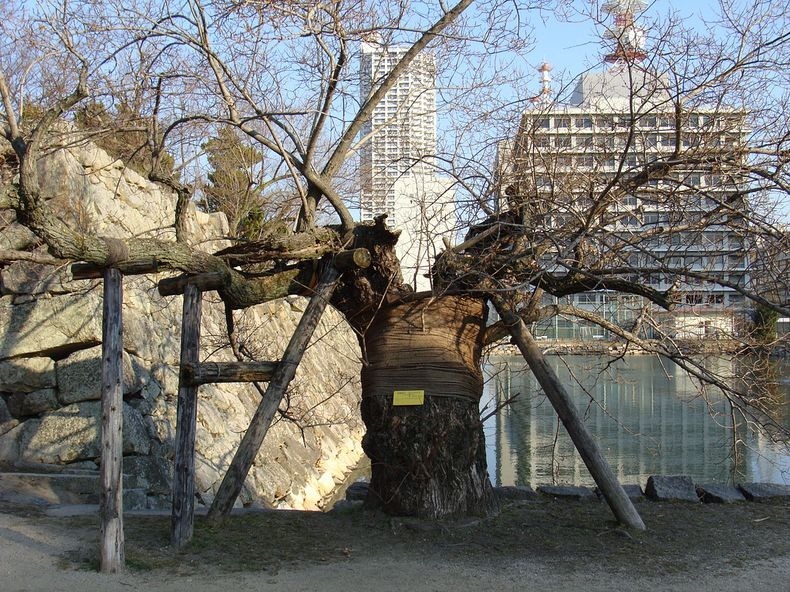
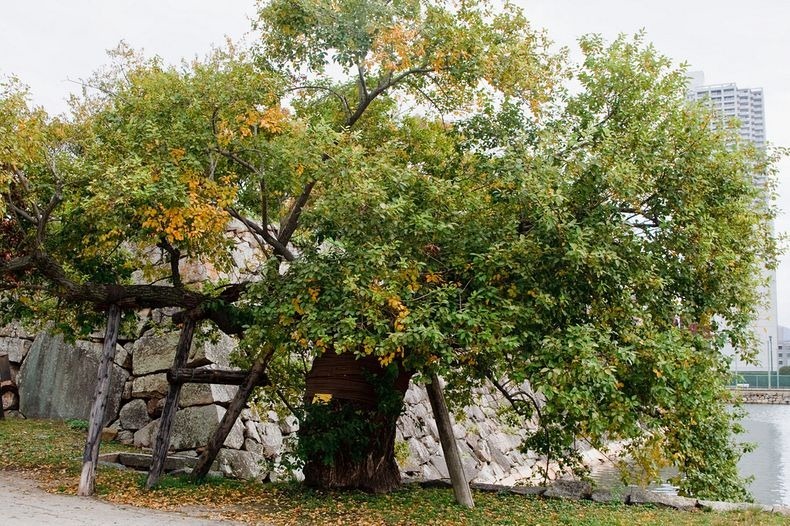
Sources: Peace Seeds, Submityourarticle



The sheer power of life over destruction doesn't cease to overwhelm me.
ReplyDeletethe note was fantastic
ReplyDeleteWhat a terrible event. I hope America has the sense to never use another nuclear weapon again.
ReplyDelete